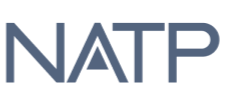💡 Key Takeaways
- Offer in Compromise qualification includes being current with your tax filing and making all estimated tax payments.
- Taxpayers must complete Form 656 and either Form 433-A or Form 433-B.
- An OIC application requires a $205 non-refundable fee, but this can be waived for eligible low-income taxpayers.
- Applying for an OIC on your own can be difficult and tedious. It is highly recommended to rely on a tax resolution firm like TaxRise for efficient assistance.
The IRS Offer in Compromise (OIC) enables taxpayers to settle their tax debt for less than the total amount owed. However, filing for an OIC requires a detailed process and complete IRS compliance. Errors or missing documents can delay your case or lead to outright rejection.
This step-by-step guide explains how to calculate your Offer in Compromise, key OIC forms, and how to submit a complete OIC application in 2025.
1. Ensure IRS Compliance
Before you start filling out an OIC form, gather your financial documents and check that all tax returns are filed and current estimated payments are made (if applicable). The IRS will not consider your offer otherwise.
TaxRise specializes in guiding clients through IRS compliance requirements, ensuring that all filings and payments are brought up to date before submitting an Offer in Compromise application. By helping you achieve accurate compliance, we can lay the foundation for a strong OIC submission and maximize your chances of approval.
2. Calculate Your Reasonable Collection Potential (RCP)
The IRS uses the Reasonable Collection Potential to decide whether to accept an Offer in Compromise. It is a calculation of how much the IRS believes it can realistically collect from you – either right now from your assets or over time from your future income.
How Does the IRS Calculate Reasonable Collection Potential?
The IRS uses this standard Reasonable Collection Potential formula:
RCP = Net Quick-Sale Asset Value + (Monthly Disposable Income × 12 or 24 months)
- Use 12 months if you propose a lump-sum cash offer.
- Use 24 months if you propose periodic payments.
This calculation helps you submit an offer amount that’s realistic and acceptable to the IRS. TaxRise’s experts can help you calculate this and submit it with your OIC application – preventing any errors.
3. Complete Important Offer in Compromise Forms
IRS Form 656 – The Offer in Compromise Agreement
Form 656 is a legal contract that spells out the tax years covered, the amount you propose to pay, and your chosen payment method.
Here’s what you will need to complete Form 656:
- Full name
- For joint offers, include your spouse’s full name.
- Social Security Number (or Employer Identification Number if applying for a business).
- Home and mailing address.
- List of all tax years/periods owed.
- Low-income certification (if applicable).
- Business information and a list of all tax years/periods owed (if applicable).
- Your reason for an offer in compromise.
- Your payment terms
- Lump-sum cash: 20 % down payment with up to five additional payments.
- Periodic payments: initial payment with monthly installments.
- Designation of payments to specific tax years.
- Citing your source of funds to pay for the OIC.
- Filing all required tax returns.
- Signature agreement to the Offer terms.
Tip: When filing Form 656, ensure accuracy and review your application before submitting it to the IRS. Misstating tax years, amounts, or payment terms can invalidate your offer in compromise.
The Offer in Compromise (OIC) application is a highly complex and time-consuming process. Even a small error in gathering financial documentation or interpreting IRS eligibility standards can cause delays. Because of this, taxpayers interested in pursuing an OIC should strongly consider working with tax professionals who specialize in these cases.
TaxRise’s experienced team handles the entire process, from preparing the required forms to negotiating directly with the IRS. Learn more and read this Offer in Compromise success story on how TaxRise reduced a client’s $10,734.49 tax liability to just $500!
IRS Form 433-A (OIC) – Collection Information Statement for Individuals
If you are a wage earner or self-employed, you must submit Form 433-A (OIC). This detailed financial statement tells the IRS exactly what you can afford.
Here’s what you will need to complete Form 433-A:
- Personal and household information.
- Employment information for wage earners.
- Personal asset information (domestic and foreign)
- Self-employment information (if applicable)
- Business asset information for self-employed (domestic and foreign).
- Business income and expense information for self-employed.
- Monthly household income and expense information.
- Minimum offer calculation.
- Provide additional information the IRS needs to consider:
- If you are involved in a litigation.
- If you have filed for bankruptcy.
- If you have lived outside of the U.S. for 6 months or longer.
- If you are the beneficiary of a trust, estate, or life insurance policy.
- If you are a trustee, fiduciary, or contributor of a trust.
- If you have a safe deposit box (business or personal).
- If you have transferred any assets with a fair market value of more than $10,000.
- If you have any assets or own any real property outside the U.S.
- If you have any funds being held in trust by a third party.
You must also provide copies of the following supporting documents to submit with Form 433-A:
Copies of your latest pay stub or earnings statement from each employer.
Latest statements for each investment and retirement account.
Records showing all currently held digital assets.
Latest statements for all other income.
Three months of the most recent individual bank statements and six months for each business account if applicable.
Completed Form 433-B if you or your spouse owns a business other than a sole proprietorship.
Latest loan statements (mortgages, vehicles, etc.) showing payments, balances, and payoff amounts.
List of accounts receivable or notes receivable, if applicable.
Proof of delinquent state or local tax liability and monthly payment amounts, if applicable.
Court orders for child support or alimony that are claimed as monthly expenses.
Trust documents, if applicable (per Section 9).
Documentation supporting any special circumstances described on Form 656.
Form 2848 (Power of Attorney) if you want a representative, and no current form is on file. List all tax years and forms involved.
Completed and signed Form 656.
IRS Form 433-B (OIC) — For Businesses
Business entities must file Form 433-B (OIC). It asks for similar financial details as in Form 433-A, but focuses on business income, expenses, and assets.
Here are the supporting documents needed for Form 433-B:
A current Profit and Loss statement covering the most recent 6–12 month period, if applicable.
Six most recent bank statements for each business account and three most recent statements for each investment account.
If an asset is used as collateral on a loan, include the most recent statement from lender(s) on loans, monthly payments, loan payoffs, and balances.
Most recent statement of outstanding accounts and notes receivable.
Documents and records showing currently held digital assets.
Most recent statements from lenders on loans, mortgages, monthly payments, loan payoffs, and balances.
Relevant supporting documentation of special circumstances described in Section 3 on Form 656, if applicable.
Form 2848 (Power of Attorney) if you want a representative, and no current form is on file. List all tax years and forms involved.
Completed and signed Form 656.
Which OIC Form Do I Use?
The table below shows who should use Form 433-A or Form 433-B.
| Use Form 433-A if you are: | Use Form 433-B if you are: |
|---|---|
|
Note: If your business is a sole proprietorship, complete Form 433-A instead. |
If you’re unsure which OIC form to file, it’s best to consult with a TaxRise expert before submitting your application. Using the incorrect form or missing key information can result in an immediate IRS rejection – often triggering a lengthy and frustrating appeal process.
Historically, the IRS accepts one in three OIC applications. It’s best to work with a professional to ensure your forms are completed correctly the first time, which improves your chances of settling for less than what you owe.

4. Pay the OIC Application Fee
How Much Is the 2025 Offer in Compromise Application Fee?
The application fee is $205 unless you qualify for low-income relief. This applies to each Form 656 submitted and can be paid with:
- Check or money order
- IRS’s Direct Pay system
- Electronic Federal Tax Payment System (EFTPS)
If you meet the IRS’s low-income certification guidelines, then you don’t need to:
- Pay the application fee or the initial payment.
- Make monthly payments while your offer is being reviewed.
Full details on the low-income guidelines can be found on Form 656.
5. Assemble and Submit Your Offer in Compromise Application
Overall, your complete OIC application package should include:
- Form 656
- Form 433-A (OIC) (individuals) or 433-B (OIC) (businesses)
- All required supporting documents.
- $205 application fee (waived for qualifying low-income applicants)
- Initial payment for each Form 656. (waived for qualifying low-income applicants)
Once completed, you may mail your application to the appropriate IRS facility. The table below outlines which mailing address to use based on your state.
| State Residency | OIC Application Mailing Address | Phone Number |
|---|---|---|
| AZ, CA, CO, GA, HI, ID, KY, LA, MS,
NM, NV, OK, OR, TN, TX, UT, WA |
Memphis IRS Center COIC Unit
P.O. Box 30803, AMC Memphis, TN 38130-0803 |
844-398-5025 |
| AK, AL, AR, CT, DC, DE, FL, IA, IL, IN, KS, MA, MD,
ME, MI, MN, MO, MT, NC, ND, NE, NH, NJ, NY, OH, PA, PR, RI, SC, SD, VA, VT, WI, WV, WY, or a foreign address |
Brookhaven IRS Center COIC Unit
P.O. Box 9007 Holtsville, NY 11742-9007 |
844-805-4980 |
After You File: The IRS Review Process
The IRS review process can take up to 24 months. During this time:
- You must stay current on all tax filings and payments.
- The IRS may contact you for more documents or clarification. Respond promptly to avoid delays.
- If the IRS accepts your offer, you’ll sign a formal agreement and must stay compliant for five years. Failure to do so reinstates the full tax liability.
If your offer is rejected, you have 30 days to appeal using Form 13711. Alternatively, you may consider other tax resolution options and speak with a tax professional for your next steps.
How TaxRise Can Help with an Offer in Compromise
An Offer in Compromise can resolve years of tax debt stress, but the process is far from simple. The IRS OIC program is notoriously difficult to navigate, requiring precise financial disclosures, extensive documentation, and strict adherence to IRS guidelines. Missing documents or miscalculations can result in your offer being denied or returned without review.
That’s where TaxRise comes in. Our team of dedicated Enrolled Agents, CPAs, and tax attorney has successfully guided thousands of taxpayers through this exact process. We know what the IRS looks for and how to present your case for the best possible outcome.
When you partner with TaxRise, we handle every step of the Offer in Compromise process for you:
- Conducting a comprehensive eligibility review to ensure you qualify.
- Gathering and organizing all required financial documentation.
- Accurately completing Form 656 and related IRS forms.
- Communicating directly with the IRS on your behalf to avoid costly mistakes and delays.
Trying to tackle an OIC alone can feel overwhelming, but you don’t have to do it by yourself. Take action today. Start a free consultation with TaxRise and begin your journey toward lasting tax relief!
Frequently Asked Questions
Yes, the IRS provides a free OIC pre-qualifier tool that taxpayers can use. For complex situations and finances, we recommend consulting with a tax professional to learn more about OIC eligibility.
The full OIC review cycle can take 24 months before the IRS provides a decision. This is dependent on inventory levels and case complexity. Missing documents or incorrect information can cause delays in your resolution.
The main fees associated with filing an Offer in Compromise include a non-refundable $205 application fee, plus any initial payment based on your offer type. However, these fees can be waived if you meet the low-income certification guidelines.
Yes, experienced tax resolution firms will ensure complete documentation and will present your case professionally. The IRS approves only a small percentage of Offer in Compromise applications each year, and success often depends on how well your case is prepared. Don’t risk delays or rejection, and speak with TaxRise for help.
You can track the status of your OIC application through an IRS online account or monitor progress through TaxRise.









0 Comments